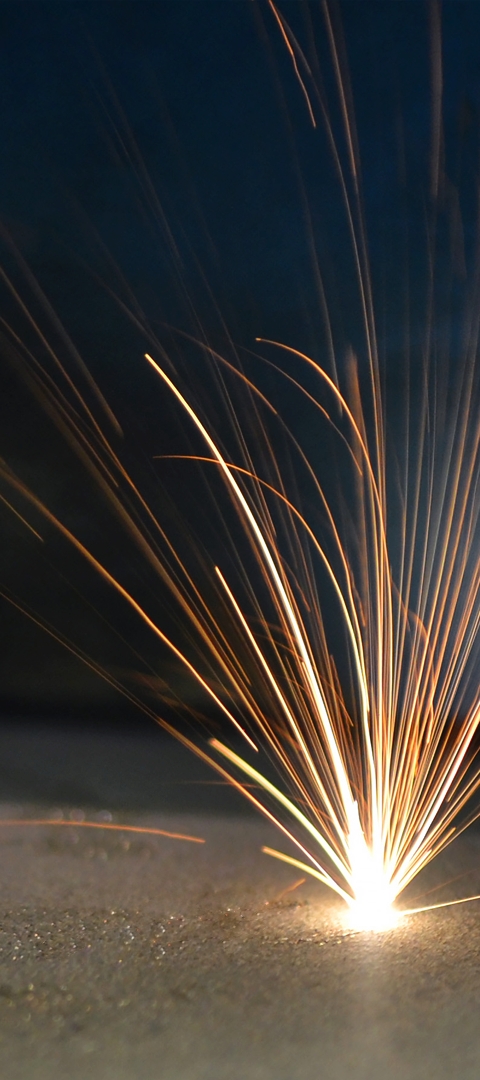
Agrivoltaic Power Generation System
APV [Agro·photovoltaics] Power
A collaborative system cultivating green energy on farmland while simultaneously growing green crops, taking advantage of the science of the photo-saturation point principle, that is, plants no longer photosynthesize once they overrun the photosynthetic threshold.
Technically, 70% of the amount of sunshine is taken up for growing crops, whereas the redundant sunshine is to be used up to generate PV power; whereby going for the effect of hitting three birds with one stone, such as pumping up farmhouse incomes substantially, making the most of limited farmland eco-efficiently, and gaining ground itself on a national scale as a new & renewable energy solution literally.
The features entitled Green economy
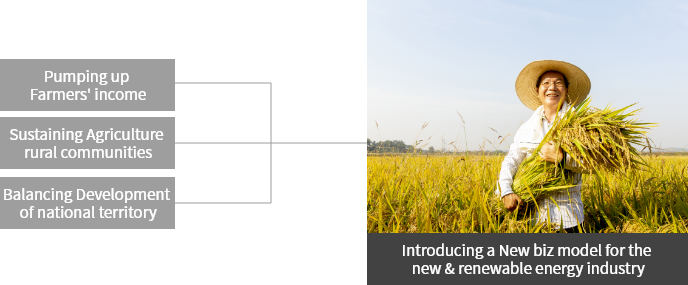
Scaling up the efficiency of the operation of the agricultural machinery, with the rotational space for the agricultural vehicles freed up as the support of the solar structure is placed at the center of the structure.
Application of eco-friendly construction method free from degradation of the farmland.Erecting and taking down the structures leaving no damage to farmland itself, by putting to use the rotary press-fitting method on a screw-type foundation construction without using any concrete.
Placement of solar modules facing due south.Maximizing power generation yield by directing south-facing arrangement, even on irregular farmland where arable land is not yet so organized.
Construction period shortened and worker safety secured.Shortening the construction time and securing the safety of workers, by carrying out structural and electrical works on the ground.
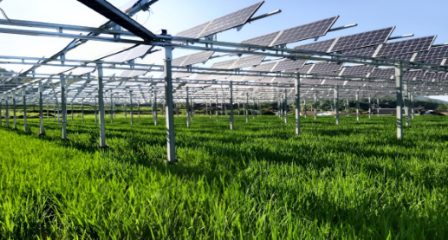
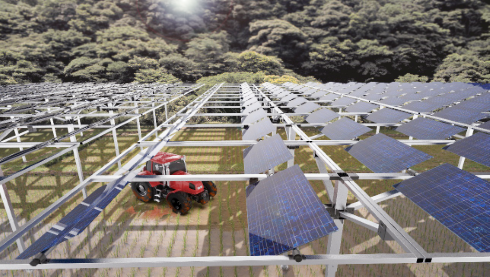

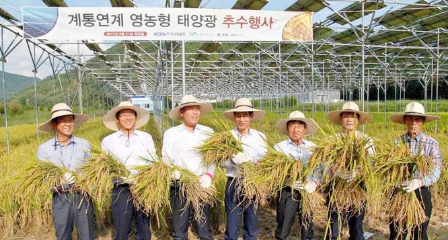
System schematics
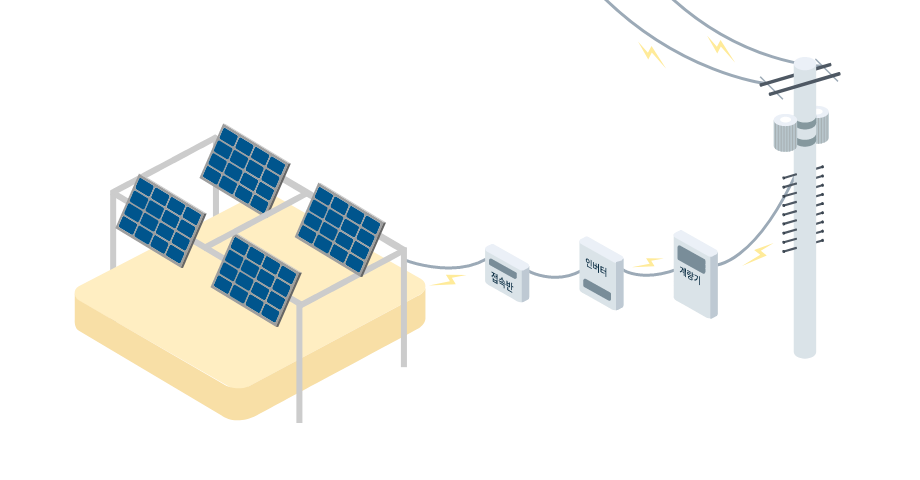
Electricity generated from the solar panels installed on farmland is sold to the Korean Power Exchange (KEPCO) at the System Marginal Price (SMP) by way of connection board, inverter, and then meter, and can be sold to RPS principals, by obtaining Renewable Energy Certificate (REC) issued by the Korea Energy Corp., in accordance with Renewable-energy Portfolio Standard (RPS) system that has been enforced since 2012.
Comparative study between module layout types
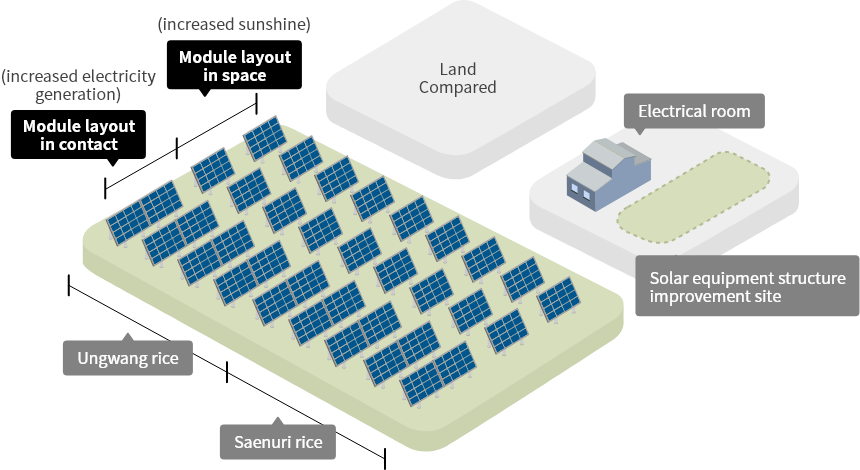
Track records

- Agrivoltaic power generation system support project (KOEN, Large & Small Business
Agricultural and Fishery Cooperation Foundation, Korea Energy Foundation)
- Constructing 2 plants of 100kW class in Gyeongsangnam-do

- KEPCO Agrivoltaic power generation system support
project (KEPCO, Large & Small
Business Agricultural and Fishery Cooperation Foundation, Korea Energy
Foundation)
- Constructing a plant of 350kW class in Taean-gun
- EWP Agrivoltaic power generation system support
project (EWP, Large & Small
Business Agricultural and Fishery Cooperation Foundation, Korea Energy
Foundation)
- Constructing 3 plants of 99.64kW class each in Ulju-gun

- Agrivoltaic power generation system support project
(KOEN, Large & Small Business Agricultural and Fishery Cooperation Foundation, Korea Energy Foundation)
- Constructing 5 plants of 100kW class each in Gyeongsangnam-do
-
Agrivoltaic power generation system construction
- Constructing a plant of 30.72kW, at Naedong Campus in Jinju/Gyeongsang National Uni.

- Agrivoltaic power generation system support
project (KOEN, Large & Small
Business Agricultural and Fishery Cooperation Foundation, Korea Energy
Foundation)
- Constructing 7 plants of 100kW class each in Gyeongsangnam-do

- Grid-connected Agrivoltaic power generation R&D (KOEN)
- Bupyeong Village (Goseong) 99.84kW






